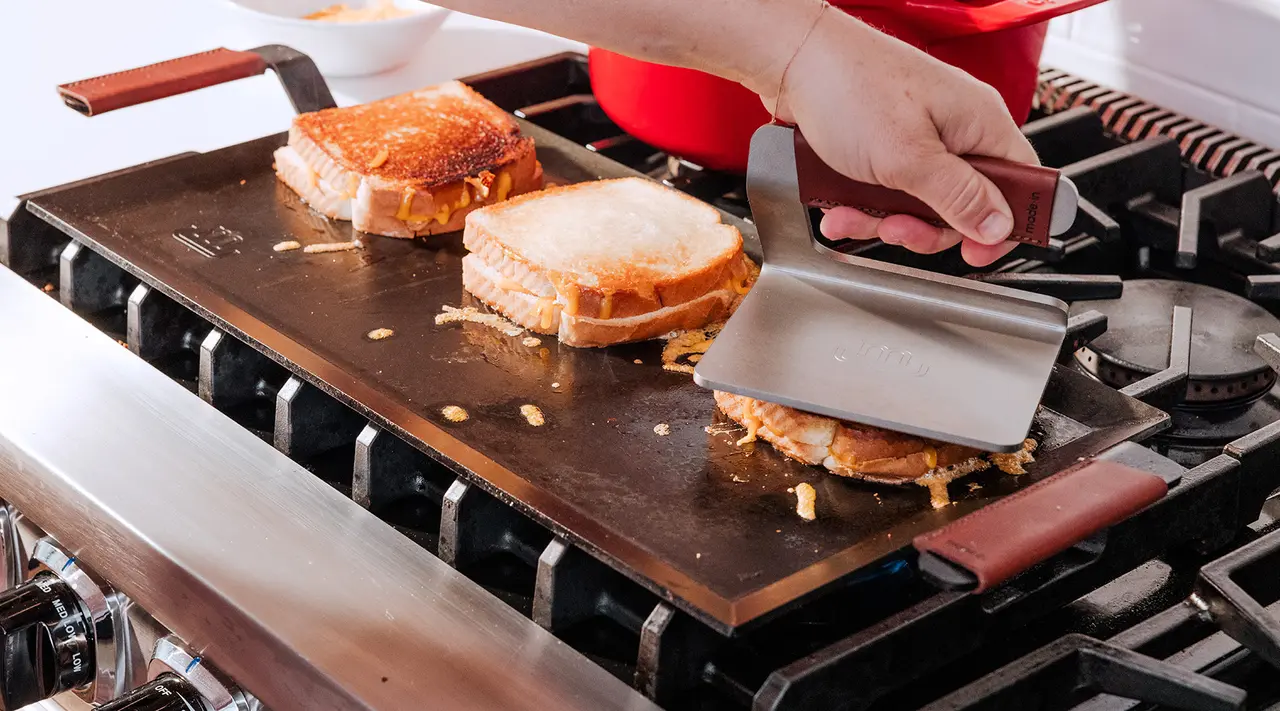Heat Resistance in Griddle Tools: A Comprehensive Guide
Written By James Morgan
For barbecue lovers, having the right tools is essential to achieve the ultimate cookout experience. One often underestimated aspect is the heat resistance in griddle tools. This article will explore why heat resistance is crucial, how it functions, and what characteristics make a griddle tool dependable. Whether you're an experienced grill aficionado or just enjoy weekend barbecues, grasping this concept can elevate your grilling skills.
Griddle tools face intense heat during cooking, and their capacity to withstand these temperatures without deterioration is known as heat resistance. It's critical to select tools that not only handle heat well but also retain their quality over time. This ensures you can grill without concerns about tools bending, melting, or introducing harmful substances to your food.

Why Heat Resistance Is Important
Heat resistance isn't just jargon; it's a key characteristic that influences how tools behave under high temperatures. Safety is the primary reason why heat resistance matters. Tools that fail to meet heat resistance standards can pose dangers. For instance, a spatula that melts can lead to accidents or endanger food safety. Additionally, high-quality heat-resistant tools enhance control and precision in your cooking.
Using griddle tools with the right heat resistance not only safeguards safety but also improves the cooking process. It helps in even heat distribution, which prevents hot spots that could cause food to cook unevenly. This is especially crucial for delicate items such as fish or vegetables, where precise cooking is essential to maintain flavor and texture.
The Science of Heat Resistance
How does heat resistance actually work? It primarily involves the materials used in making the tools. Griddle tools crafted from metals like stainless steel or aluminum are recognized for their superior heat resistance. These metals can endure high temperatures without losing shape or leaking harmful chemicals. Some tools also feature heat-resistant composites or silicone, providing extra protection against extreme heat.
Stainless steel is often favored for its durability and rust resistance, making it ideal for outdoor cooking. Aluminum, while lighter, offers excellent heat conduction, making it suitable for spatulas and tongs. Adding silicone handles to these tools provides a comfortable grip that remains cool during use.
Selecting the Right Heat-Resistant Tools
When choosing griddle tools, it's vital to consider the cooking techniques you'll employ. For high-heat tasks like searing steaks or stir-frying, opt for stainless steel or aluminum tools. For more delicate foods, silicone or composite tools can provide the gentleness required to prevent damage. For more tips on essential griddle tools, visit this guide.
Brand reputation plays a significant role in the quality of griddle tools. Trusted brands typically provide tools that have been rigorously tested for heat resistance and durability. Choosing products from reputable sources can save you the hassle of dealing with faulty equipment. For more insights on maintaining your tools, check out this article.
Proper Care for Your Griddle Tools
Even high-quality tools can lose their heat resistance if they're not cared for properly. Regular cleaning is imperative. After each use, be sure to remove food particles and wash the tools thoroughly. Avoid abrasive cleaners that can scratch surfaces and degrade their integrity. For further maintenance advice, you might find this article helpful.
Proper storage is equally important. Keep your tools in a dry spot to avoid rust and other forms of damage. If your tools have wooden handles, ensure they remain moisture-free to prevent cracking. Regularly inspect your tools for signs of wear and tear, replacing them as necessary to ensure safety and performance.
Common Mistakes to Avoid
A frequent mistake among barbecue enthusiasts is using the incorrect tool for specific tasks. Using non-heat-resistant plastic tools can result in melting or breaking, posing significant hazards. Always confirm that your tools are suitable for the temperatures you'll be dealing with. For a more comprehensive understanding of how to use a griddle effectively, check this resource.
Another common error is neglecting the upkeep of heat-resistant tools. Over time, heat and food residue can damage the material, diminishing its effectiveness. Routine cleaning and inspections can extend the life of your tools considerably.
Conclusion
Understanding heat resistance in griddle tools is essential for anyone serious about barbecuing. It ensures not just safety but also enhances the quality of your cooking. By selecting the right tools, caring for them correctly, and avoiding prevalent pitfalls, you can elevate your grilling experience. Remember, the right tools can significantly impact achieving that perfect sear or gentle grill mark.

FAQ
What materials are optimal for heat resistance in griddle tools?
Stainless steel and aluminum are superb options due to their capacity to endure high temperatures without warping. Silicone also makes an excellent choice for handles, thanks to its cool touch.
How can I care for my griddle tools to maintain their heat resistance?
Consistent cleaning and proper storage are key factors. Steer clear of abrasive cleaners and ensure tools are stored in a dry environment.
Are there specific brands known for producing high-quality heat-resistant griddle tools?
Yes, several reputable brands offer durable, heat-resistant tools. Its wise to purchase from trustworthy sources to guarantee quality and safety.
This article contains affiliate links. We may earn a commission at no extra cost to you.



